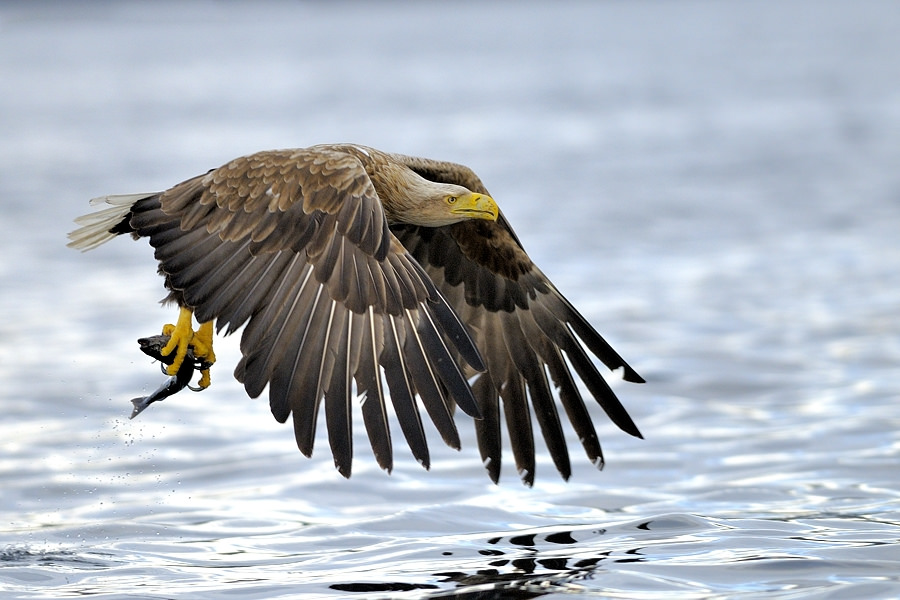White-tailed Eagle
Eryr y mor - Haliaeetus albicillia
The White-tailed Eagle was fairly common throughout much of Europe until the early 1900s, when numbers started to decrease dramatically, mainly because of human persecution that resulted in the loss of many of the western European populations. The White-tailed Eagle was widespread across Britain in the 18th Century, with over 150 eyries/nest sites known across Britain. including eyries in Wales and England. It is thought that the breeding population of White-tailed Eagles in Wales diminished in 1860, with the last known nest site in Kenfig Burrows, Swansea, West Glamorgan. The species UK extinction can be attributed to the direct and sustained persecution by shepherds, game preservers, fishery owners, skin and egg collectors.
The last UK White-tailed eagle nest was recorded on the Isle of Skye in 1916, and the last UK White-tailed Eagle was later shot in Shetland in 1918 exterminating the full UK population. Fortunately, Scottish National Heritage and the RSPB reintroduced the White-tailed Eagle back to the UK in 1975, taking 82 young eagles from Norway and releasing them on the Isle of Rum over a 10-year period. he reintroduction programme was entitled a success in 1985 when the programme had its first successful breeding pair. Further eagle releases were conducted in 1990 targeting Wester Ross,the population in Scotland is now considered as a self-sustaining population, there are now over 120 breeding pairs in Scotland.

